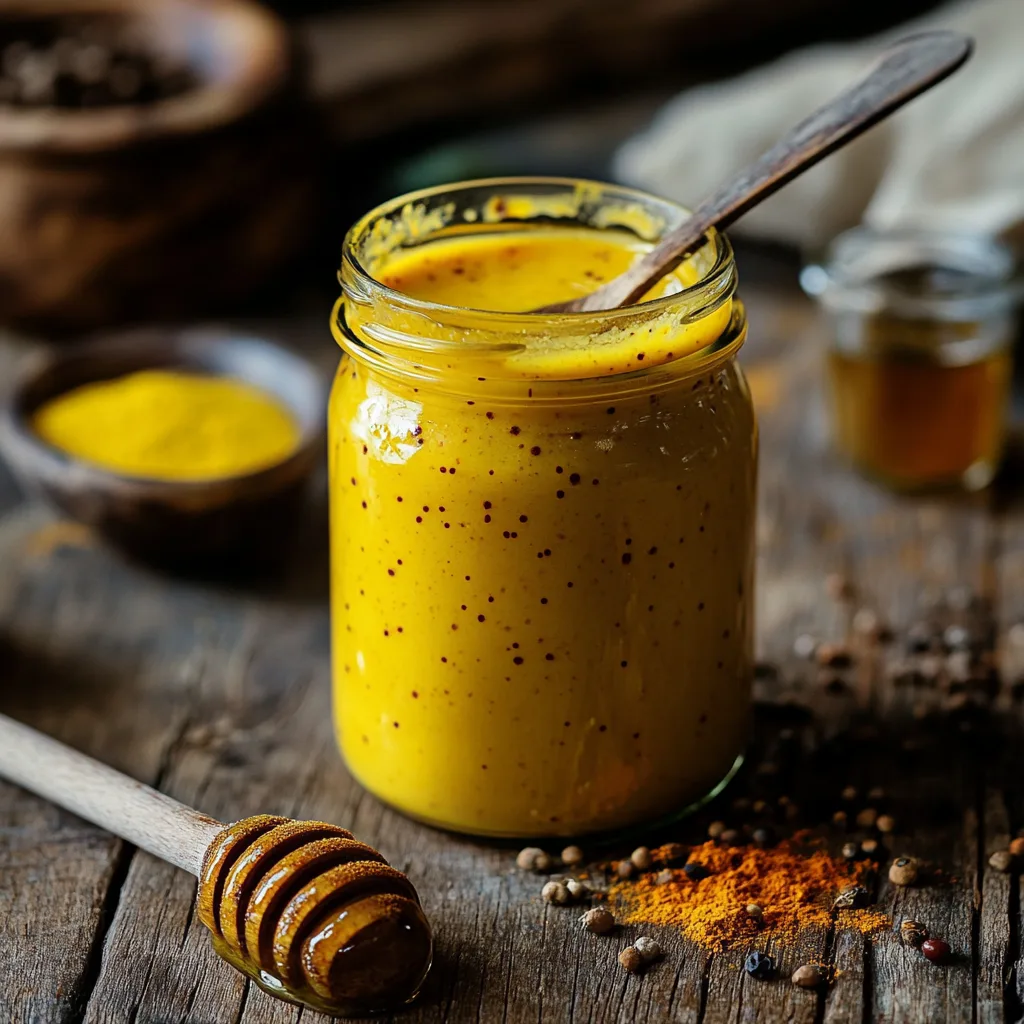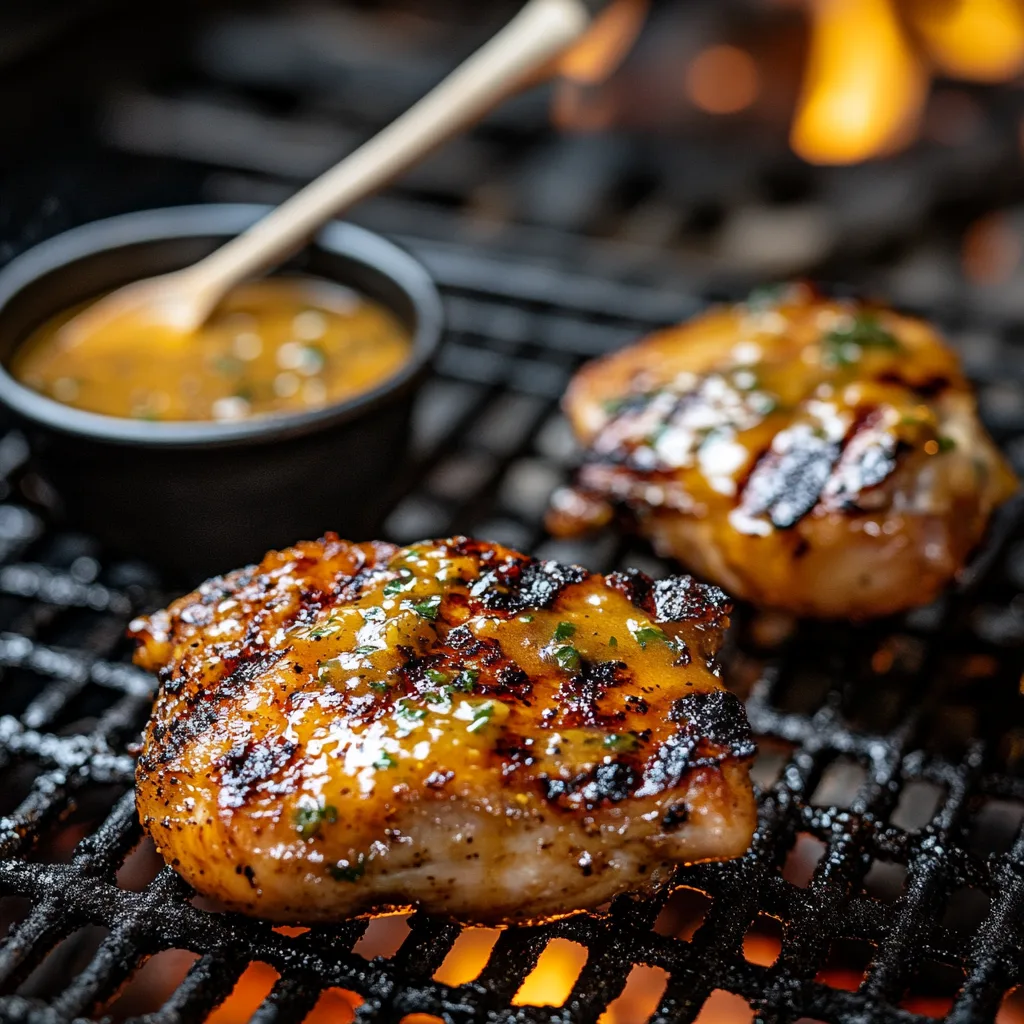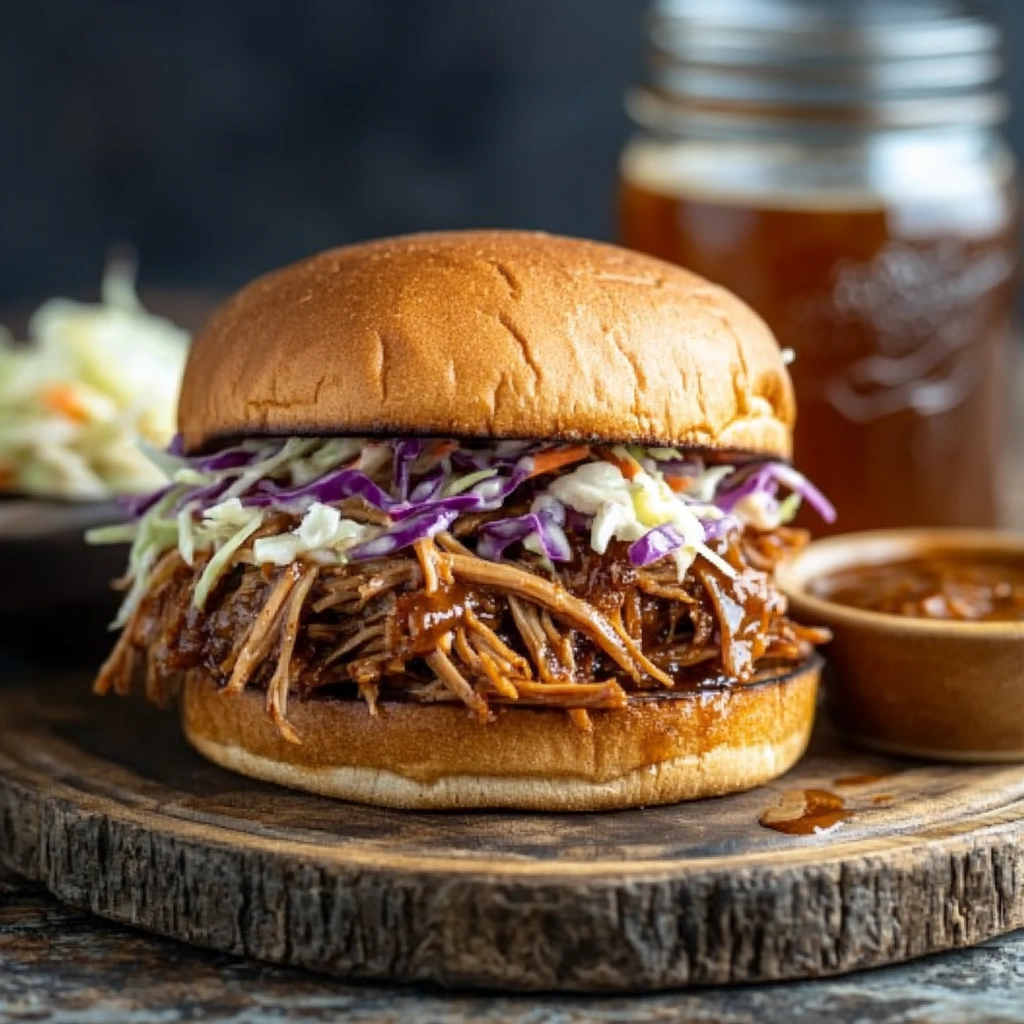Barbecue enthusiasts know that a sauce can define an entire culinary experience. Among the myriad barbecue sauces that grace American tables, one stands out for its vibrant hue, tangy-sweet flavor, and deep cultural roots: Carolina Gold Sauce. This golden concoction has its heart in South Carolina, where it’s revered not only as a condiment but as a testament to rich culinary traditions.
Carolina Gold Sauce is more than just a barbecue sauce; it’s a reflection of Southern ingenuity and a bridge between history and gastronomy. In this article, we’ll uncover everything you need to know about Carolina Gold Sauce—from its intriguing origins to its versatile uses in the kitchen. Whether you’re a seasoned pitmaster or a curious home cook, this guide will inspire you to embrace the golden magic of this unique sauce.
1. History and Origin of Carolina Gold Sauce
1.1 Roots in South Carolina
Carolina Gold Sauce traces its origins back to South Carolina, a state that has long been celebrated for its barbecue traditions. While most regions of the United States favor tomato-based sauces, South Carolina stands apart with its mustard-based barbecue sauce, a distinction largely attributed to the influence of German immigrants who settled in the region during the 18th century.
These settlers brought with them a love for mustard, a staple ingredient in their homeland. They combined mustard with locally available ingredients like vinegar and honey to create a tangy, sweet, and slightly spicy sauce that perfectly complemented the region’s slow-cooked pork. Over time, this unique mustard sauce became synonymous with South Carolina barbecue.
1.2 The Evolution of the Name “Carolina Gold”
The name Carolina Gold isn’t just a nod to the sauce’s golden color—it carries historical significance. South Carolina was once a hub for growing a variety of rice known as “Carolina Gold,” prized for its quality and flavor. The sauce’s name likely draws inspiration from this rich agricultural heritage, further linking it to the region’s identity.
By the mid-20th century, Carolina Gold Sauce began gaining recognition outside of South Carolina, thanks in part to the rise of regional barbecue competitions and the growing popularity of Southern cuisine. Today, it is celebrated as one of the defining elements of South Carolina barbecue culture.
2. Ingredients and Flavor Profile
2.1 Core Ingredients
Carolina Gold Sauce owes its distinctiveness to its simple yet flavorful combination of ingredients. Each component plays a specific role in creating the sauce’s signature taste. Here’s a breakdown of its essential elements:

Alt Text: Carolina Gold Sauce in a glass jar with mustard seeds, honey, and spices on a rustic table.
- Yellow Mustard: The base of the sauce, lending its bold tanginess and vibrant golden color.
- Vinegar: Adds sharpness and acidity, balancing the richness of the mustard.
- Brown Sugar: Introduces a mellow sweetness that complements the tangy notes.
- Honey: Enhances the sweetness while contributing a smooth texture.
- Spices: Typically includes black pepper, cayenne, and garlic powder for a subtle kick.
- Butter or Oil (optional): Some variations incorporate fat for a richer consistency.
2.2 Taste Description
Carolina Gold Sauce is a harmonious blend of bold and balanced flavors. It delivers a tangy punch from the mustard and vinegar, followed by a gentle sweetness from the brown sugar and honey. The addition of spices provides a mild heat, making it suitable for a wide range of palates. Unlike tomato-based sauces, Carolina Gold Sauce has a brighter, more piquant profile that pairs exceptionally well with smoky, slow-cooked meats.
2.3 Comparison to Other Barbecue Sauces
Carolina Gold Sauce stands apart from other barbecue sauces in the U.S.:
- Kansas City Sauce: Tomato-based and sweet, often thicker and less tangy.
- Alabama White Sauce: Mayonnaise-based, creamy, and tangy but without the golden hue.
- Texas-Style Sauce: Spicy and smoky, emphasizing tomato and chili flavors.
Carolina Gold Sauce’s mustard-forward flavor makes it a refreshing departure from the norm, appealing to those seeking something tangy and less sweet.
3. Traditional Preparation Methods
3.1 Classic Recipe Breakdown
Preparing Carolina Gold Sauce at home is straightforward and rewarding. Here’s a basic recipe to achieve the authentic flavor:
Ingredients:
- 1 cup yellow mustard
- ½ cup apple cider vinegar
- ⅓ cup brown sugar
- 2 tbsp honey
- 1 tsp black pepper
- ½ tsp cayenne pepper (adjust for spice level)
- 1 tsp garlic powder
- 1 tbsp butter (optional, for richness)
Instructions:
- In a saucepan, combine mustard, vinegar, and brown sugar. Whisk until smooth.
- Add honey, spices, and butter. Stir to combine.
- Heat over medium-low, stirring occasionally, until the mixture begins to simmer.
- Reduce heat and let it cook for 5-7 minutes to allow the flavors to meld.
- Remove from heat, let cool, and store in an airtight container.
3.2 Tips for Perfection
- Balance the flavors: Adjust the sweetness, tanginess, and heat to your preference by tweaking the sugar, vinegar, and spices.
- Low and slow cooking: Avoid boiling the sauce, as high heat can alter its flavor profile.
- Let it rest: Allow the sauce to sit for a few hours after preparation to deepen the flavors.
3.3 Variations
- Smoky Twist: Add a teaspoon of smoked paprika or liquid smoke.
- Fruity Blend: Incorporate a tablespoon of peach preserves for a fruity note.
- Vegan-Friendly: Swap honey for maple syrup or agave nectar.
4. Culinary Uses and Pairings
4.1 Ideal Pairings
Carolina Gold Sauce is incredibly versatile, making it a staple for various dishes. Its tangy, sweet, and slightly spicy profile pairs beautifully with many Southern classics and beyond. Some of its best pairings include:

Alt Text: Grilled chicken glazed with Carolina Gold Sauce on a smoky grill.
- Pulled Pork: The tangy mustard cuts through the richness of slow-cooked pork, enhancing its smoky flavor.
- Grilled Chicken: Brushed on during the last minutes of grilling, it creates a caramelized, golden glaze.
- Smoked Ribs: A slather of Carolina Gold Sauce elevates tender ribs with a tangy-sweet coating.
4.2 Beyond Barbecue
This sauce isn’t limited to barbecue—it shines in various culinary applications:
- Sandwiches: Use it as a spread for pulled pork sandwiches or burgers to add a zesty kick.
- Salads: Drizzle it over coleslaw or mixed greens for a unique mustard-based dressing.
- Marinades: Its acidic nature makes it an excellent marinade for chicken or pork.
4.3 Creative Applications
- Dipping Sauce: Serve it alongside fries, onion rings, or chicken tenders.
- Vegetable Glaze: Toss roasted vegetables like Brussels sprouts or carrots in the sauce for added flavor.
- Pizza Sauce Alternative: Spread it on a flatbread base and top with smoked meats for a Carolina-inspired pizza.
4.4 Pro Tip
Experiment with combining Carolina Gold Sauce with other condiments like hot sauce, mayonnaise, or Worcestershire sauce to create unique flavor blends.
5. Regional Variations and Adaptations
5.1 Regional Variations
South Carolina is home to several versions of Carolina Gold Sauce, each reflecting the local preferences of its residents:
- Lowcountry Variation: Includes more honey for a sweeter profile, popular in Charleston and coastal areas.
- Upstate Style: Features additional spices like red pepper flakes, giving it a spicier kick.
- Midlands Twist: The most traditional version, focusing on a balanced blend of tangy mustard and vinegar.
5.2 Influence of Local Ingredients
Local produce and preferences often inspire creative adaptations of Carolina Gold Sauce. Some chefs incorporate seasonal fruits like peaches or apples to add depth to the flavor. In other cases, craft breweries in South Carolina use beer as a base to infuse the sauce with malty undertones.
5.3 Modern Twists
Chefs and home cooks alike are reimagining Carolina Gold Sauce in exciting ways:
- Vegan Adaptations: Using agave nectar and vegan butter to maintain richness without animal products.
- Gourmet Versions: Adding exotic spices like turmeric or saffron for a complex flavor.
- Fusion Cuisine: Integrating it into dishes like Carolina Gold Sushi Rolls or as a topping for Korean-inspired barbecue tacos.
6. Nutritional Information
6.1 Caloric Content
Carolina Gold Sauce is a relatively light condiment compared to many mayonnaise- or cream-based sauces. A typical serving size (1 tablespoon) contains approximately:
- Calories: 25-30
- Carbohydrates: 5-6g (primarily from sugar)
- Fats: Less than 1g (minimal if butter or oil is omitted)
- Protein: 0g
6.2 Macronutrient Breakdown
The sauce’s macronutrient profile primarily consists of carbohydrates due to the sugar and honey content. It is low in fat and protein, making it a flavorful yet calorie-conscious choice for those monitoring their diet.
6.3 Presence of Allergens
While Carolina Gold Sauce is generally allergen-friendly, it’s essential to check for these potential allergens:
- Mustard Seeds: The primary ingredient may trigger reactions in those allergic to mustard.
- Honey: Can be replaced with agave syrup for vegans or those allergic to honey.
- Butter: Optional but can be substituted with vegan alternatives if needed.
6.4 Health Considerations
- Low-Calorie Option: Using reduced sugar or natural sweeteners can lower the calorie count.
- Keto-Friendly: By replacing sugar with erythritol or another keto-friendly sweetener, the sauce can fit a low-carb diet.
- Sodium Content: Monitor the amount of salt in the recipe, as mustard and added spices may already contribute to sodium intake.
7. Commercial Availability
7.1 Popular Brands
Carolina Gold Sauce has become widely available, with several brands offering their take on the classic recipe. Some popular options include:
- Heinz Carolina Gold BBQ Sauce: A mass-produced, affordable option.
- Sticky Fingers Carolina Gold: A slightly tangier take with a balanced sweetness.
- Lillie’s Q Gold BBQ Sauce: A premium brand known for its authentic Southern flavor.
7.2 Where to Buy
Carolina Gold Sauce can be found in most grocery stores, particularly in regions with a strong barbecue tradition. For those outside these areas, online retailers like Amazon, Walmart, and specialty food stores often stock a variety of brands.
7.3 Price Range
Prices typically range from $3 to $12 per bottle, depending on the brand and packaging. Homemade versions can be even more cost-effective, especially if you have the ingredients on hand.
7.4 Packaging Options
- Traditional Bottles: The most common format, easy for pouring or storing.
- Squeeze Bottles: Convenient for precise application on dishes.
- Bulk Containers: Ideal for barbecue enthusiasts who use the sauce frequently.
8. Making Carolina Gold Sauce at Home
8.1 Detailed Recipe with Measurements
Creating Carolina Gold Sauce at home is a straightforward process that allows you to customize the flavors to your liking. Here’s a tried-and-true recipe:
Ingredients:
- 1 cup yellow mustard
- ½ cup apple cider vinegar
- ⅓ cup brown sugar
- 2 tablespoons honey
- 1 teaspoon black pepper
- ½ teaspoon cayenne pepper (adjust for spice level)
- 1 teaspoon garlic powder
- 1 tablespoon Worcestershire sauce (optional for added depth)
- 1 tablespoon butter (optional, for a smooth texture)
Instructions:
- Combine Ingredients: In a medium-sized saucepan, mix mustard, vinegar, and brown sugar. Whisk until smooth.
- Add Flavor Enhancers: Stir in honey, spices, Worcestershire sauce, and butter (if using).
- Simmer: Heat over medium-low heat, stirring occasionally, until the sauce begins to simmer gently.
- Cook Slowly: Reduce heat to low and let the sauce cook for 5-7 minutes to meld the flavors.
- Cool and Store: Remove from heat, let the sauce cool, and transfer it to an airtight container. Store in the refrigerator for up to two weeks.
8.2 Storage Recommendations
- Store the sauce in a glass jar or a squeeze bottle for easy use.
- Ensure the container is airtight to maintain freshness.
- Before each use, give the sauce a good shake or stir, as some separation may occur.
8.3 Shelf Life and Preservation Tips
- Homemade Carolina Gold Sauce can last up to two weeks in the refrigerator.
- For extended shelf life, consider freezing small portions in airtight containers or silicone ice cube trays.
9. Cultural Impact and Popularity
9.1 Southern Barbecue Legacy
Carolina Gold Sauce holds a special place in the hearts of Southern barbecue lovers. Its tangy, mustard-based flavor represents the culinary traditions of South Carolina, particularly in barbecue hotspots like Columbia and Charleston. The sauce often takes center stage at barbecue competitions and community cookouts, where its unique profile sets it apart from other regional styles.

Alt Text: Pulled pork sandwich with coleslaw and Carolina Gold Sauce on a wooden plate.
9.2 Representation in Media and Cookbooks
The growing popularity of Southern cuisine has brought Carolina Gold Sauce into the spotlight. From food blogs to cookbooks, this golden sauce is celebrated for its versatility and cultural significance. Prominent chefs and television programs have highlighted it as a must-try condiment for barbecue enthusiasts.
9.3 Influence Beyond South Carolina
Though deeply rooted in South Carolina, Carolina Gold Sauce has gained a following across the United States and even internationally. It’s now a favorite at Southern-inspired restaurants and barbecue chains outside its home region. Chefs have adapted it for fusion dishes, using it in everything from Korean barbecue tacos to mustard-based pizza sauces.
9.4 Festival Celebrations
South Carolina hosts several food festivals and barbecue events where Carolina Gold Sauce is featured prominently. These festivals not only showcase the sauce but also educate attendees about its history and importance in Southern cuisine.
10. Frequently Asked Questions (FAQs)
10.1 What does Carolina Gold taste like?
Carolina Gold Sauce has a bold and unique flavor profile. Its tanginess from mustard and vinegar is balanced by a subtle sweetness from brown sugar and honey. A hint of spice from black pepper and cayenne adds complexity, making it tangy, sweet, and slightly spicy all at once.
10.2 How spicy is Carolina Gold?
Carolina Gold Sauce is mildly spicy, with a gentle kick from cayenne pepper or black pepper. The spice level is easily adjustable based on personal preference. Adding more cayenne or red pepper flakes can increase the heat, while omitting these ingredients results in a tangy and sweet sauce without much spice.
10.3 What does Carolina sauce taste like?
Carolina sauces, in general, vary depending on the region. Carolina Gold Sauce specifically is mustard-based and tangy, unlike the tomato-based or vinegar-heavy sauces found in other parts of the Carolinas. It has a balanced combination of acidity, sweetness, and a touch of heat.
10.4 Why is it called Carolina Gold?
The name “Carolina Gold” likely refers to its vibrant yellow color, reminiscent of gold, and its strong connection to South Carolina. It also pays homage to “Carolina Gold rice,” a staple crop in the region’s history, symbolizing both culinary and cultural richness.
10.5 What is golden sauce made of?
Golden sauce, or Carolina Gold Sauce, is typically made from yellow mustard, vinegar, brown sugar, honey, and spices like black pepper and cayenne. Some recipes may include butter, Worcestershire sauce, or other flavor-enhancing ingredients.
11. Conclusion
Carolina Gold Sauce is more than just a condiment; it’s a cultural icon that captures the essence of Southern barbecue traditions. Its mustard-based tang, combined with the perfect touch of sweetness and spice, makes it a standout in the world of barbecue sauces. Whether you’re a barbecue enthusiast or a curious cook, this versatile sauce can transform your meals, from classic pulled pork to innovative fusion dishes.
By understanding its history, ingredients, and uses, you gain not only a recipe but a deeper appreciation for the culinary heritage of South Carolina. So, why not give this golden gem a try? Make it at home, pair it with your favorite dishes, and experience the flavors that have captivated generations.
